A DIY body oil to deeply nourish dry skin during winter. Gotu kola, calendula and rose are solar infused into an extra virgin, cold pressed sesame oil – favoured in Ayurveda for daily self-massage (Abhyanga).
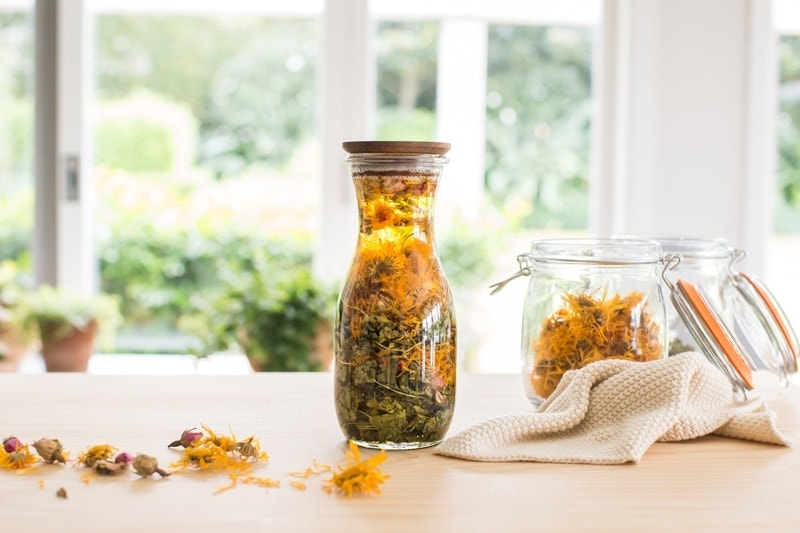
Shall we make a herbal body oil today?! Why not. We’ve had some mad weather here in NZ – uprooted trees and all, as if the weather Gods are dusting their hands together with vigour: we’re done with you Summer! The colder weather has arrived thick and fast and with that – wind chapped lips, red checks, cold fingers and dry skin.
Herbal oils make for a beautiful remedy to the above. Take a few botanicals, such as gotu kola, calendula and rose, solar infuse them into an oil (extracting the active constituents in the process) and apply daily to help soothe, nourish, moisturise and even promote collagen production.
The benefits don’t stop there however – you can turn this oil application into a daily self-care ritual. In fact, the Ayurvedic practice Abhyanga is just this – self-massage with warmed sesame oil, often infused with herbs, over the whole body, to balance and revitalise the nervous system, relieve fatigue and promote restful sleep.
What a wonderful way to diffuse stress at the end of a busy day. Can you imagine how dreamy this is after a bath and right before bed?
Sesame may seem an unusual choice here, but it is a fundamentally warm oil and super beneficial for Vata types and cold, windy days. You can dig deeper into this practice if you like and match the type of oil to your constitution for maximum benefit.
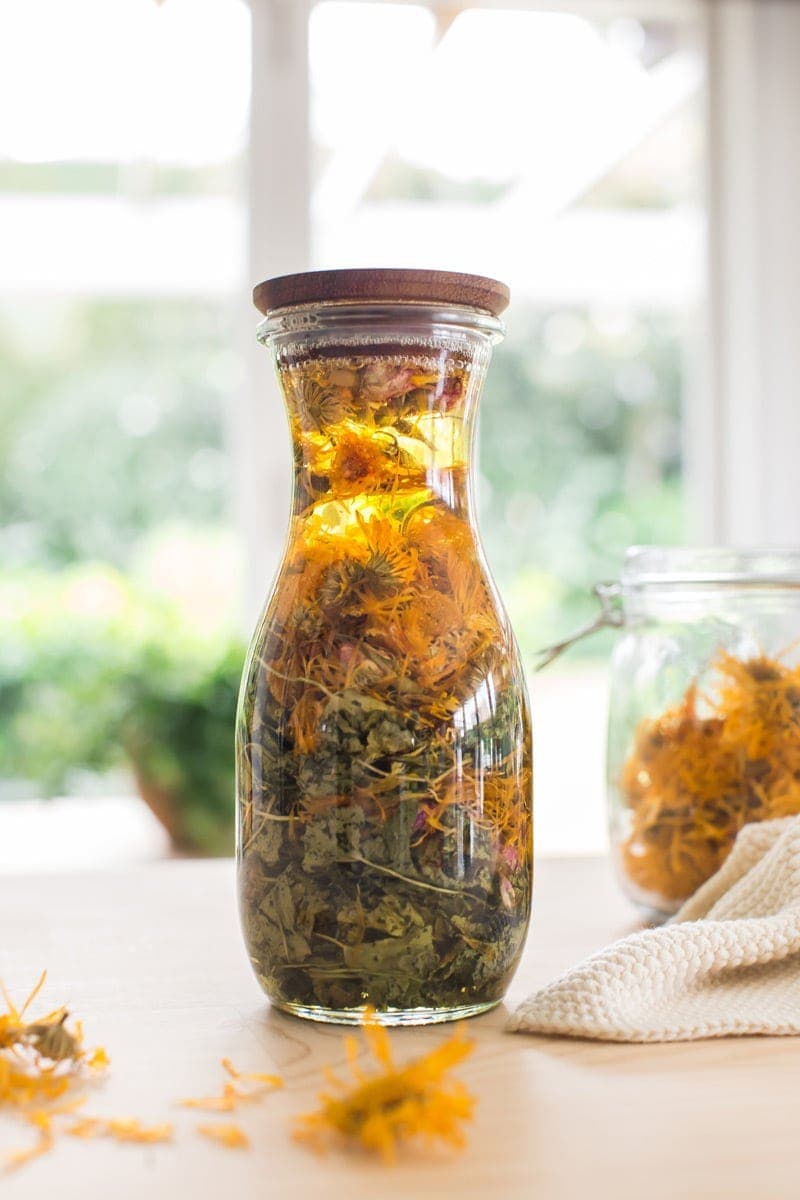
As for the herbs, you have the option of growing and harvesting your own (ridiculously satisfying, and personally, I think this adds to the medicine of it all), or purchasing them dried and ready to infuse. They are easy enough to source – particularly calendula – just try the tea section of a local health or natural foods store.
I’ll speak to the benefits of the herbs used in a moment, but first, I’ll take you through the process of growing, harvesting and drying your herbs just in case it inspires you to get planting!

Growing and Harvesting Calendula
You’ll be able to find calendula (Calendula officinalis) at a garden centre – it is a member of the daisy family and has bright orange, sunny looking flowers. Plant it in full sun and water well.
When the flowers are in full bloom, it’s time to harvest. As a rule of thumb, do this on a hot day to avoid there being any moisture on the plant, which makes for a harder time drying. Don’t be scared to pick all the flowers – more will spring back. In fact, it is better to pick them often before they start to go to seed. You’ll have quite the bounty by the end of its cycle.

To dry the flower heads, spread them over a mesh tray and leave in a warm, dry environment. I stack my trays in the dehydrator, and leave them there to air dry without adding any extra heat.
If you have a known sensitivity to the daisy (Asteraceae) family then choose another herb to work with.
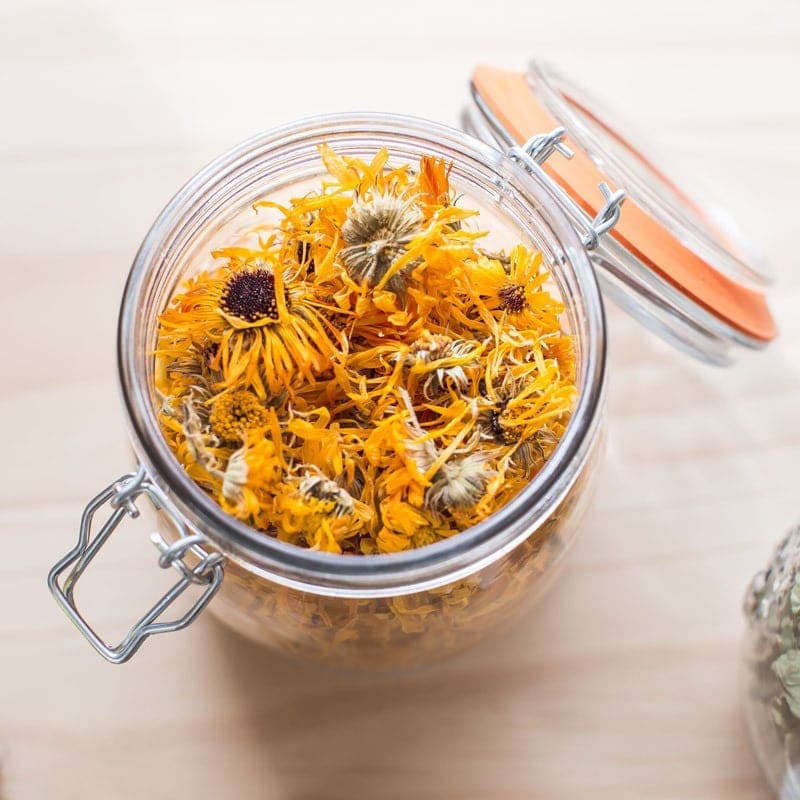
Growing and Harvesting Gotu Kola
Gotu kola (Centella asiatica) is another fun one to grow. It likes warm and moist conditions – our climate seems suited to it here in NZ. Gotu kola is a creeper – if you don’t want your garden overtaken then plant it in a pot, but I quite like the way it makes a carpet of bouncy lush green leaves.
To harvest, collect the leaves and dry on mesh trays. You can add gotu kola to garden salads. It is actually a common culinary green in Asia – in Sri Lanka they shred and combine it with coconut, chilli, shallots and lime. Yum!
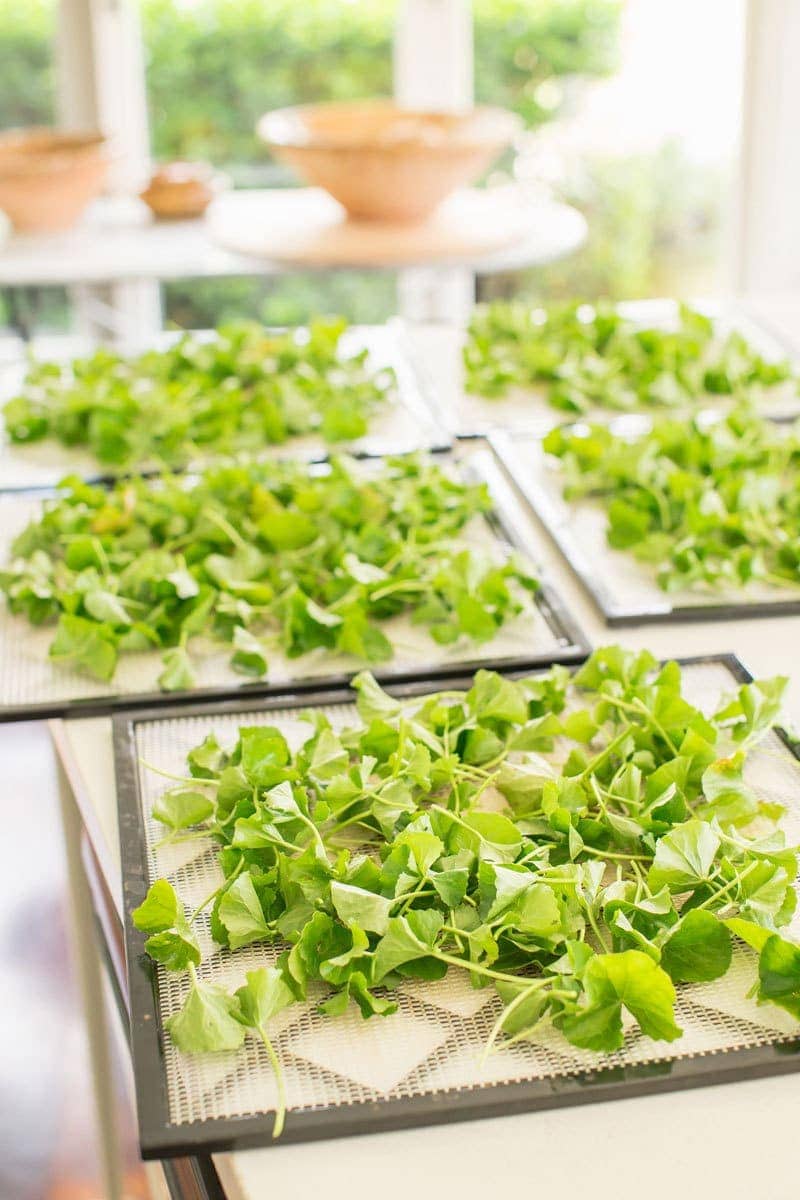
Store in air tight glass jars and they will last a long while.
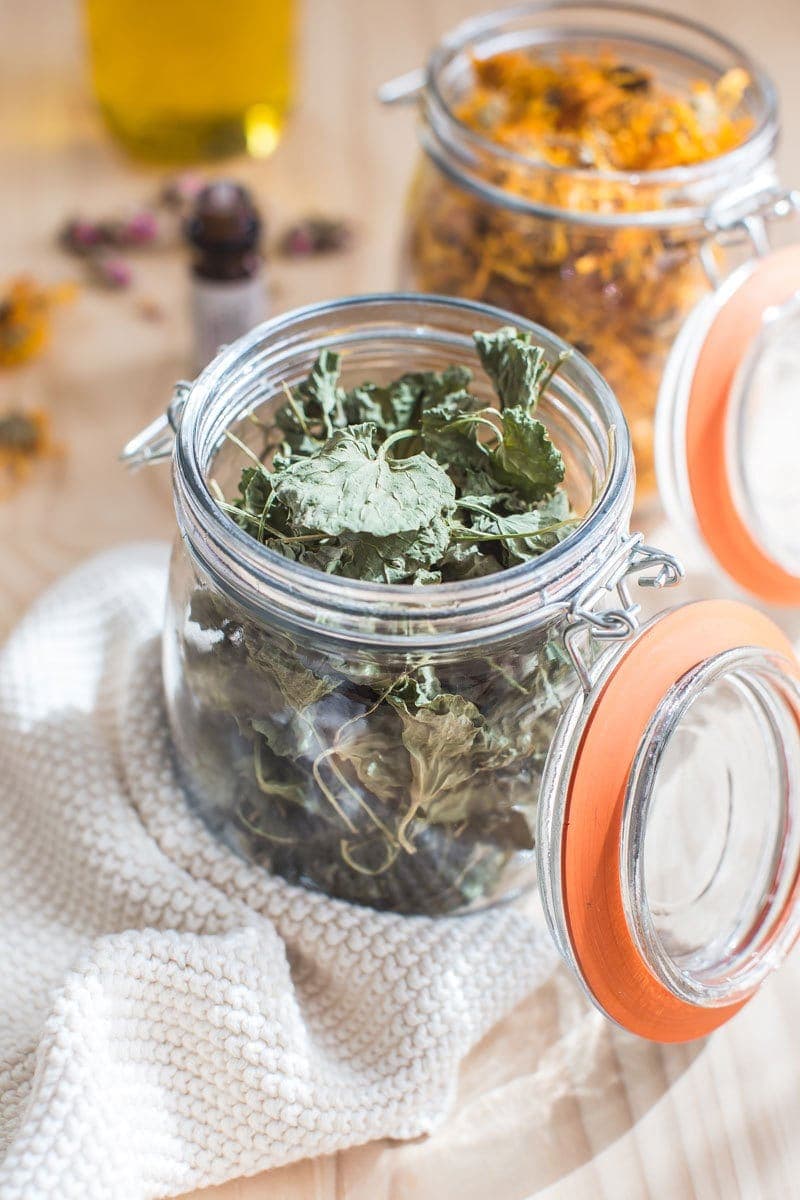
Once you have dried your herbs, you can start making your DIY body oil.
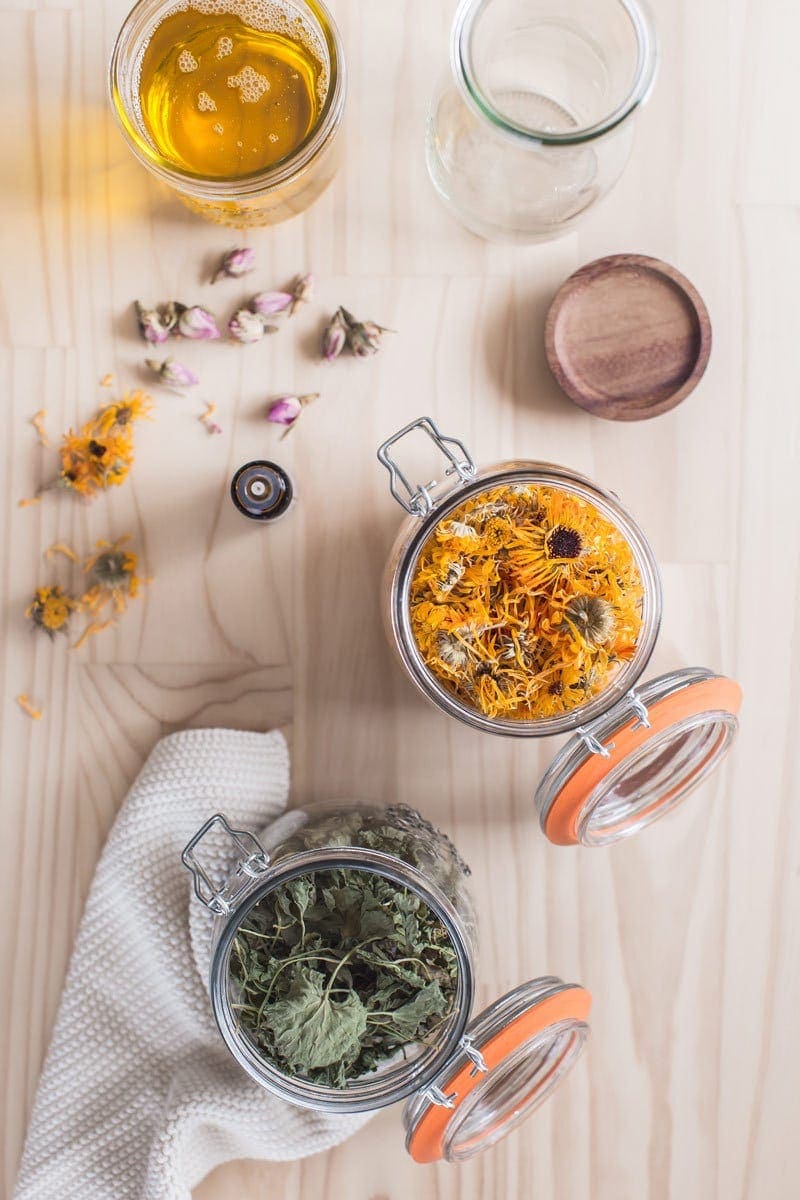
Source a beautiful 500ml jar with a tight fitting lid, and fill with a mixture of gotu kola and calendula. Because I intend on using this as a self-care ritual, I’ve also added a little dried rose.

Next, pour over quality sesame oil – organic, extra virgin and cold pressed (this will be lighter and less intense than toasted sesame oil). Make sure the plant material is well covered, and tap to release air bubbles.
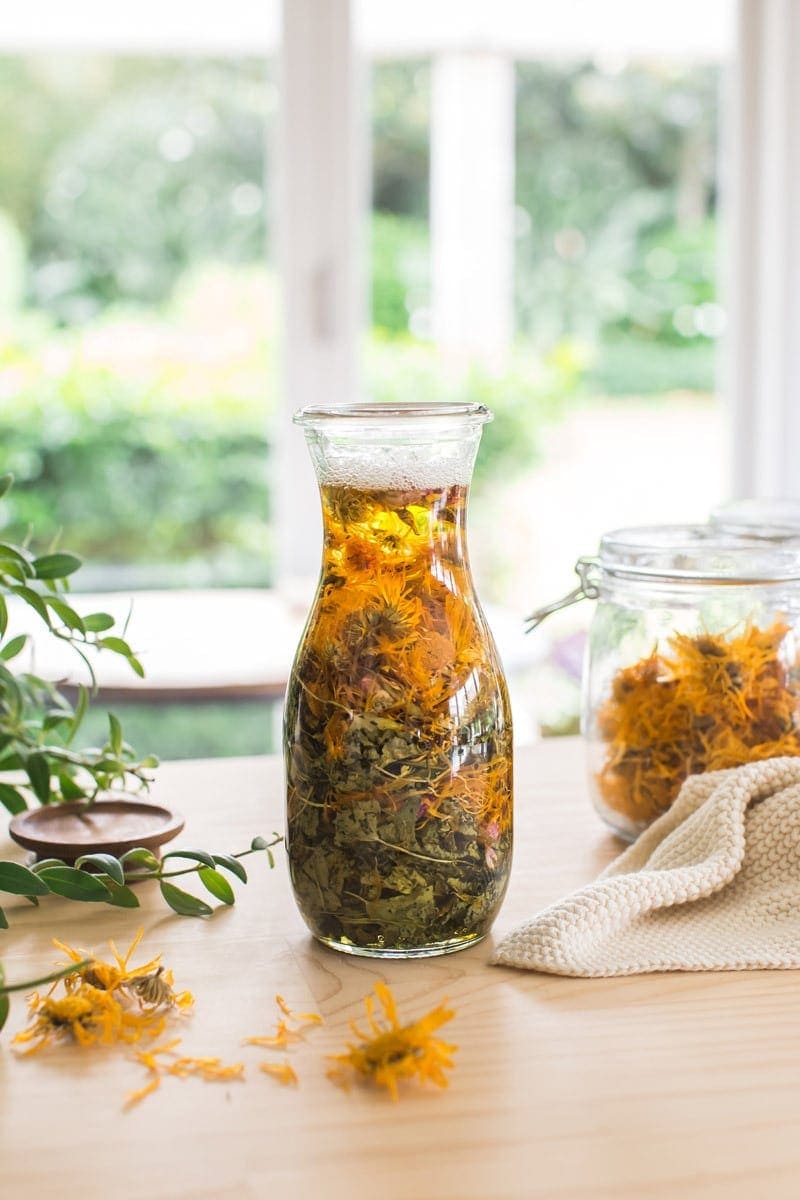
If you have some essential oils – add them in – then fasten the lid and give it a little shake.
Now all we need is a little patience. The herbs ideally need 2-3 weeks to infuse, allowing all the therapeutic constituents to be pulled into the oil. I like to leave mine somewhere where they’ll see a little sun – solar magic!
Once done – you’re good to go forth, bathe and massage!
DIY Body Oil Benefits:
- Used topically, calendula is anti-inflammatory and soothing to dry skin - great for eczema, acne, chaffed skin and cracked nipples
- Gotu kola (topically) promotes wound healing and collagen production, it, like calendula, is helpful for varicose veins, stretch marks and scarring
- Rose adds a little beauty
- Sesame is warming and deeply moisturising
- The actual act of massage itself helps to stimulate circulation and eliminate toxins. It calms the nervous system, helps relieve fatigue and promotes a sense of wellbeing

🌿Enjoyed this recipe? Leave a comment below, better yet - share a snap with me on instagram @ascensionkitchen. If you're after personalised health and nutrition advice, contact my clinic, I'd be happy to work with you.

DIY Body Oil
Equipment
- 500ml sterile glass bottle with lid
Ingredients
- 500ml organic sesame oil or other organic oil (fractionated coconut is good)
- Large handful calendula flowers dried
- Large handful gotu kola leaves dried
- 2 tablespoons rose buds dried
- Rose essential oil add enough to your liking, consult with an essential oil dilution chart
Instructions
- Place herbs in bottle: fill a 500ml (16 oz) glass bottle with dried calendula flower heads, dried gotu kola leaves and dried rose buds.
- Pour: pour oil of your choice (sesame, fractionated coconut oil, other) over the herbs to cover them. Tap the bottle lightly to release air bubbles on a hard surface. Ensure all plant material is covered by oil.
- Infuse: fasten the lid, give it a gentle shake, and place somewhere warm but out of direct light, for about 4 weeks or one moon cycle, allowing the oil to infuse.
- Strain: strain the plant material out using a fine muslin cloth, and compost the plant material. Store in a beautiful glass bottle with a lid, label and date it.
- Use: decant a small amount intended for self-massage daily. It's ideal to stand the bottle in warm water prior to use to gently heat the oil for application.
Notes
- Avoid calendula if you have a known allergy.
- Although these herbs help promote wound healing, never apply to a fresh burn or it will insulate the heat and cause more damage.
- Herbs can be found in the tea section of health or natural foods stores.
- Read the blog post for details on harvesting and drying the herbs if you are wanting to grow and use your own.
- The type of sesame oil used is extra virgin and cold pressed, not toasted. It is a lighter colour and milder in scent.
- Fractionated coconut oil is a nice addition and has cooling properties.
- Apricot or almond oils are also nice additions.

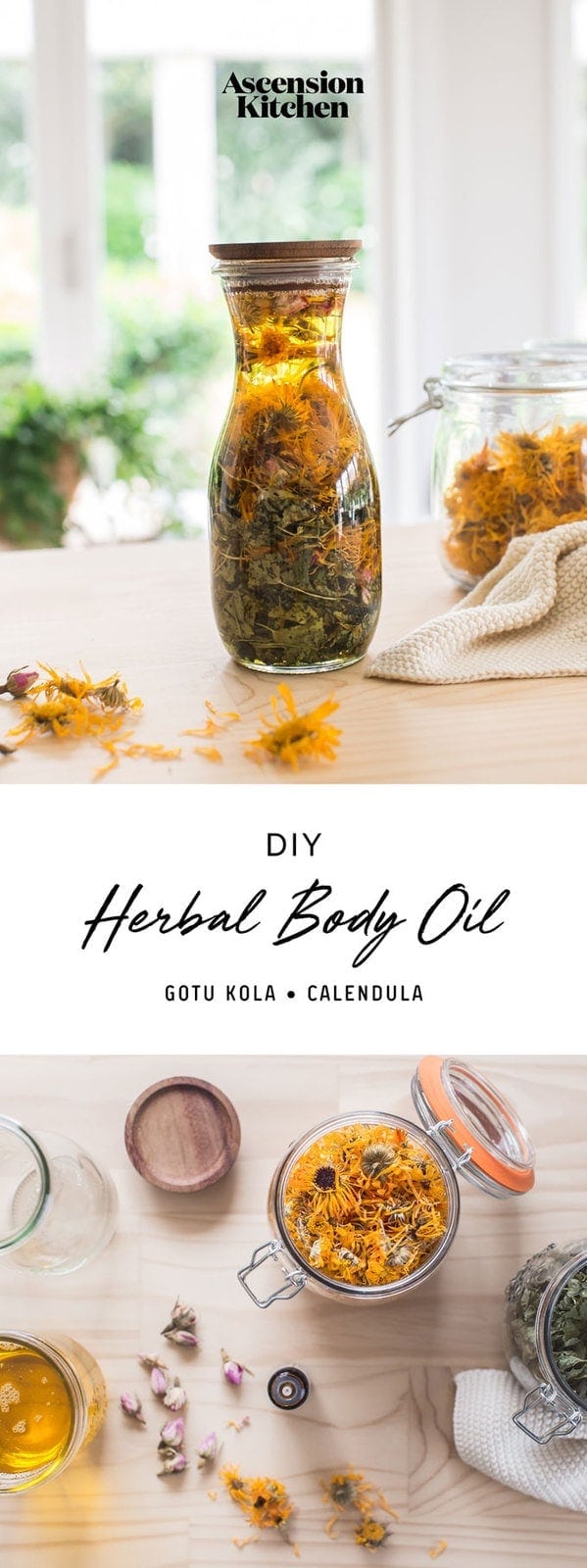
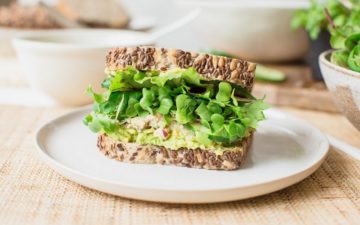


Tina
Thank you so much, Thank God I have both oils, I want to get rid of stretch marks.
Eunice
Can I add all ingredients to a crockpot to speed up the process?
Lauren Glucina • Naturopath, Nutritionist
Sure can 🙂
Letty Gonzalez
How do you use the powder version to infuse to make a oil or cream for stretch marks and a hair growth treatment?